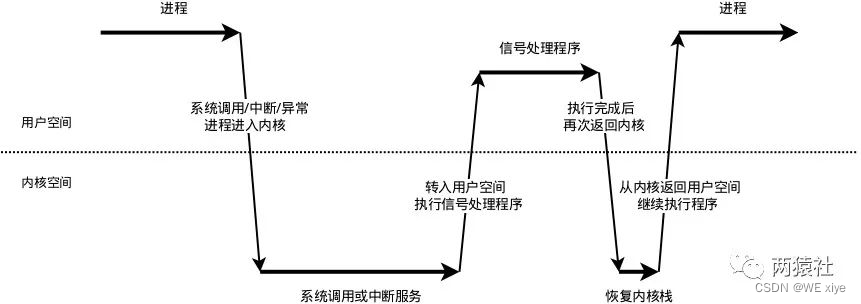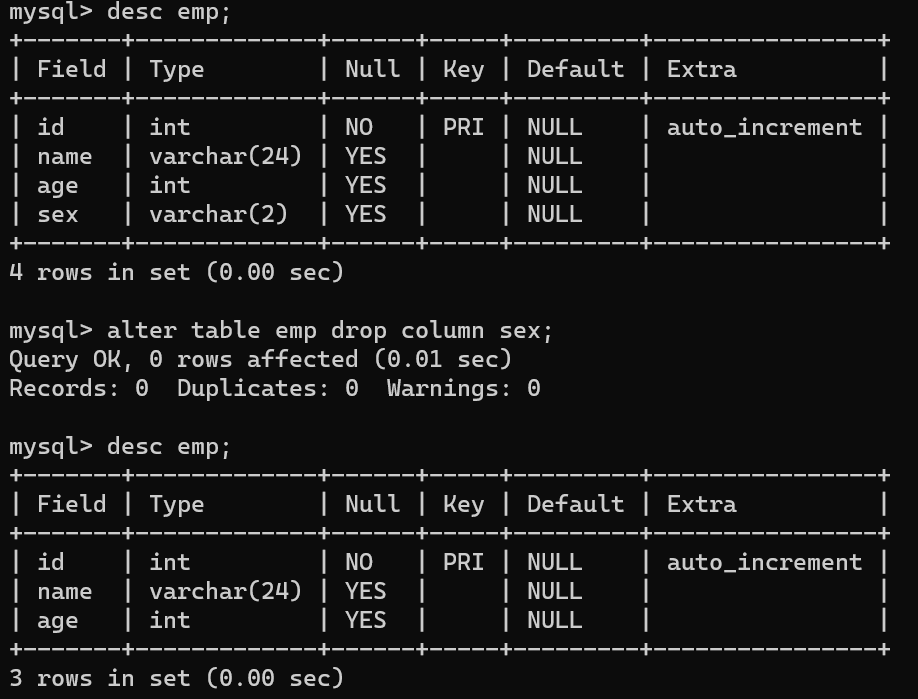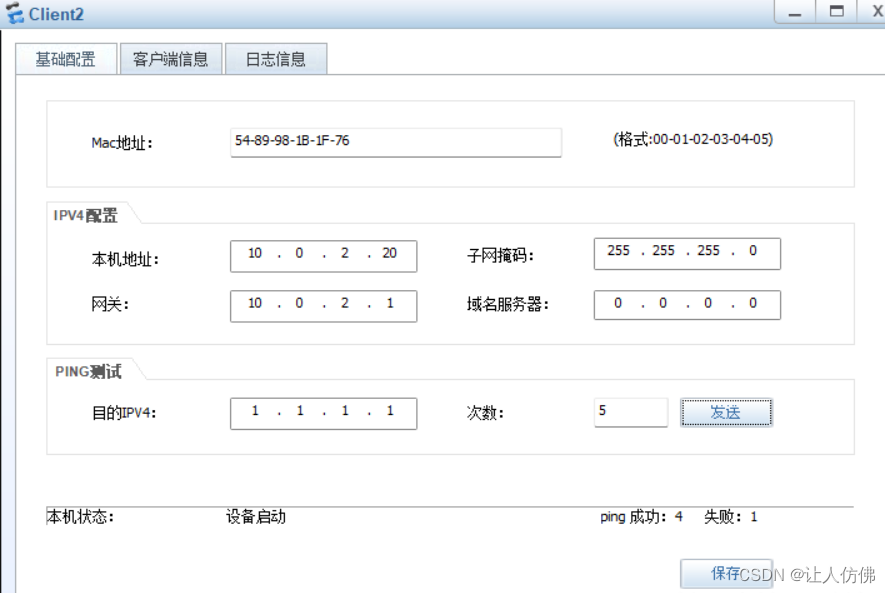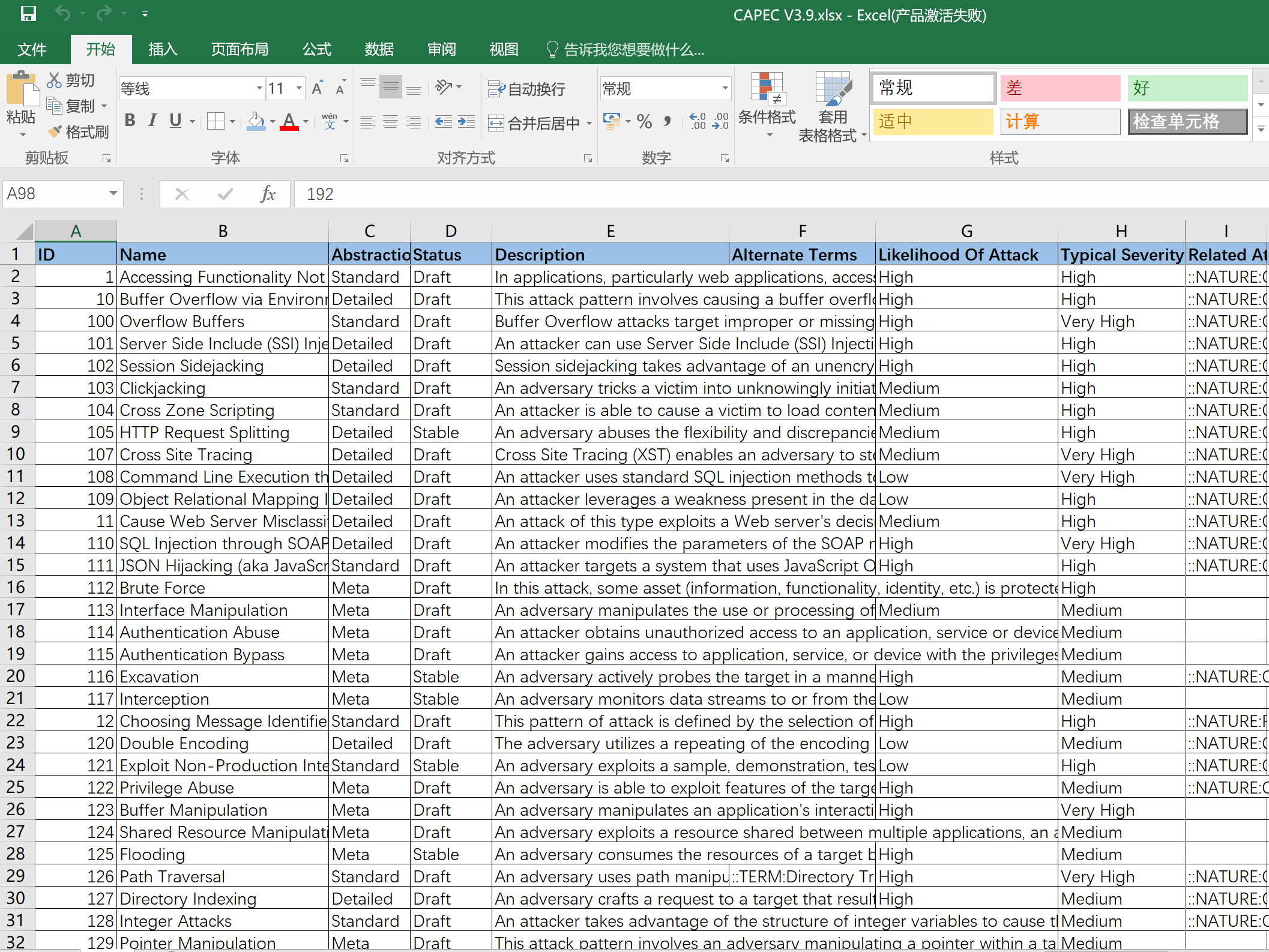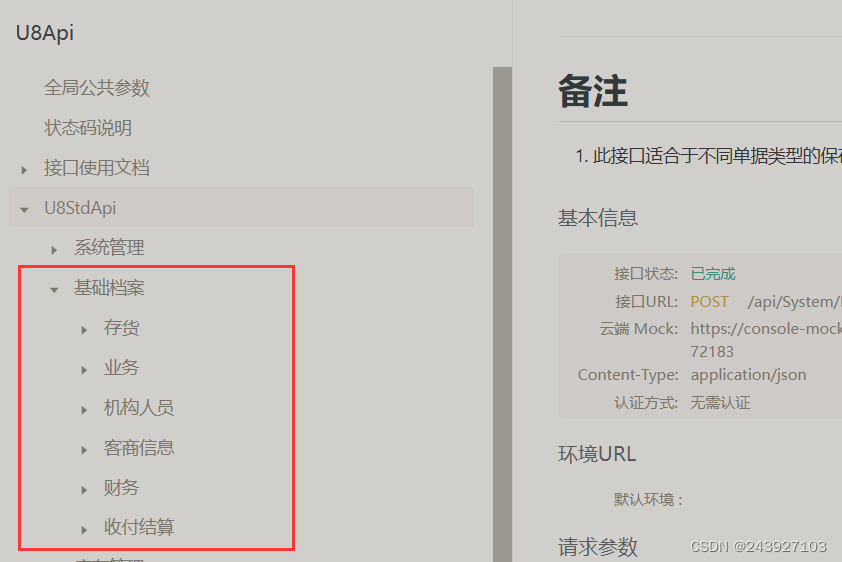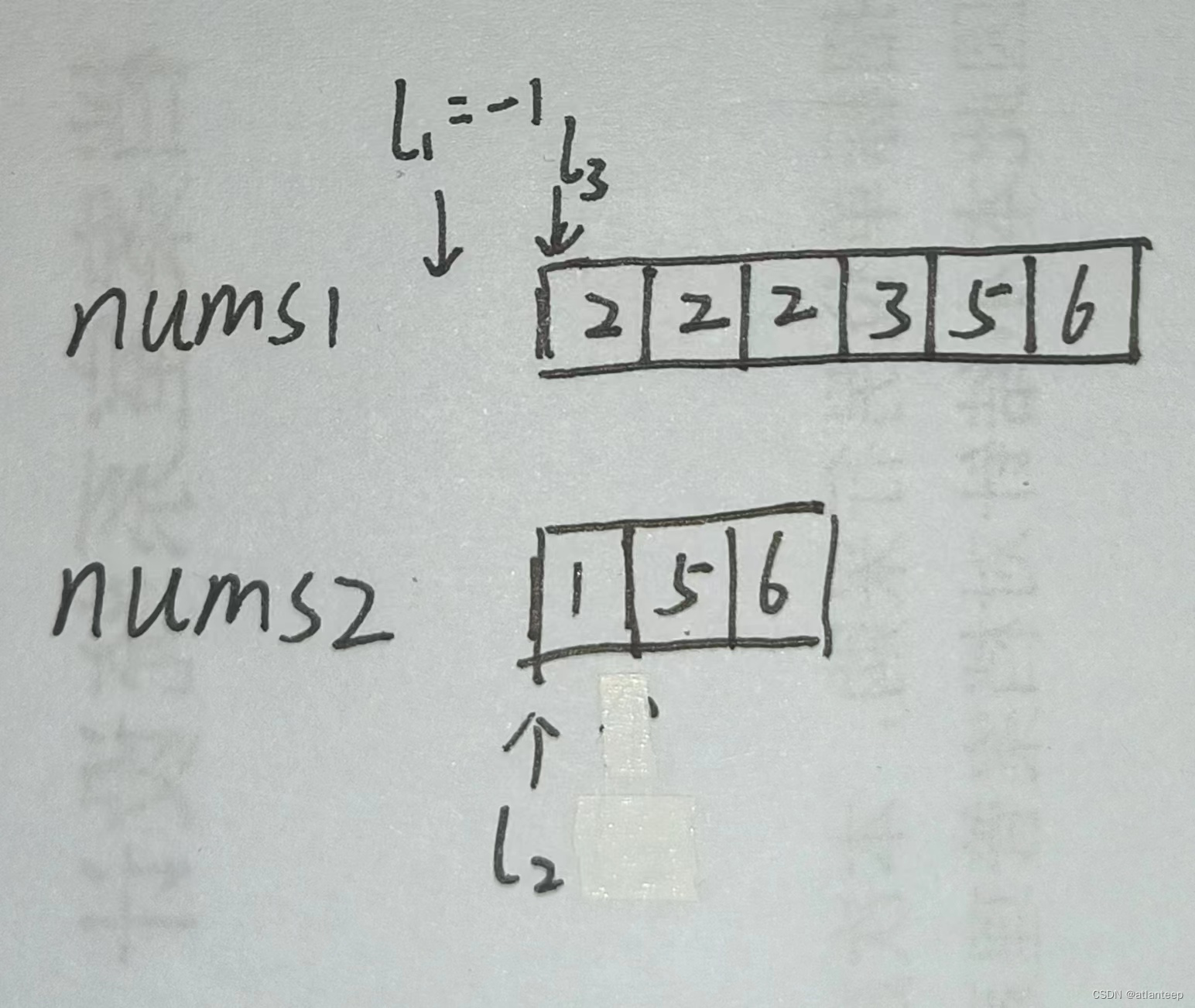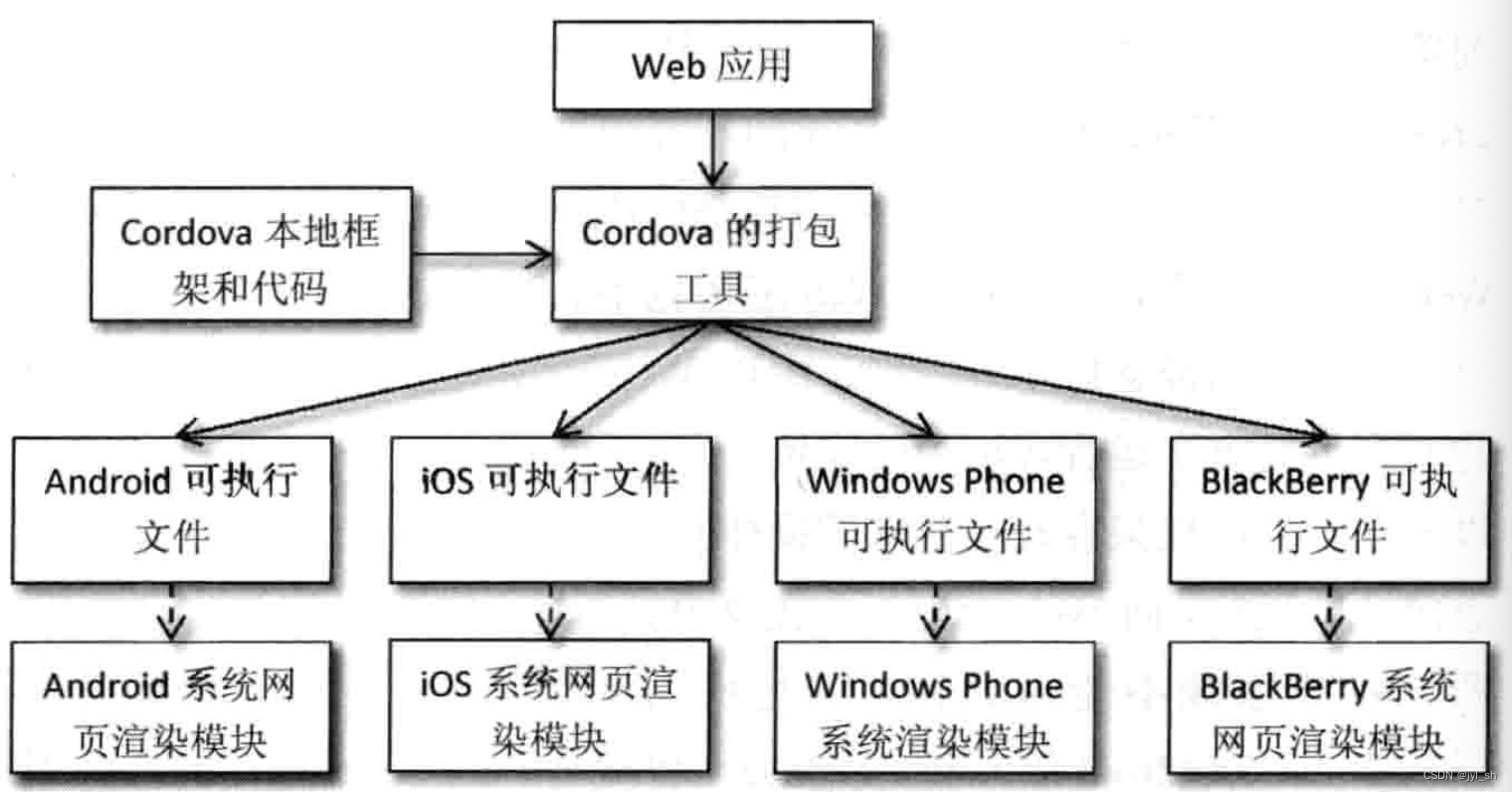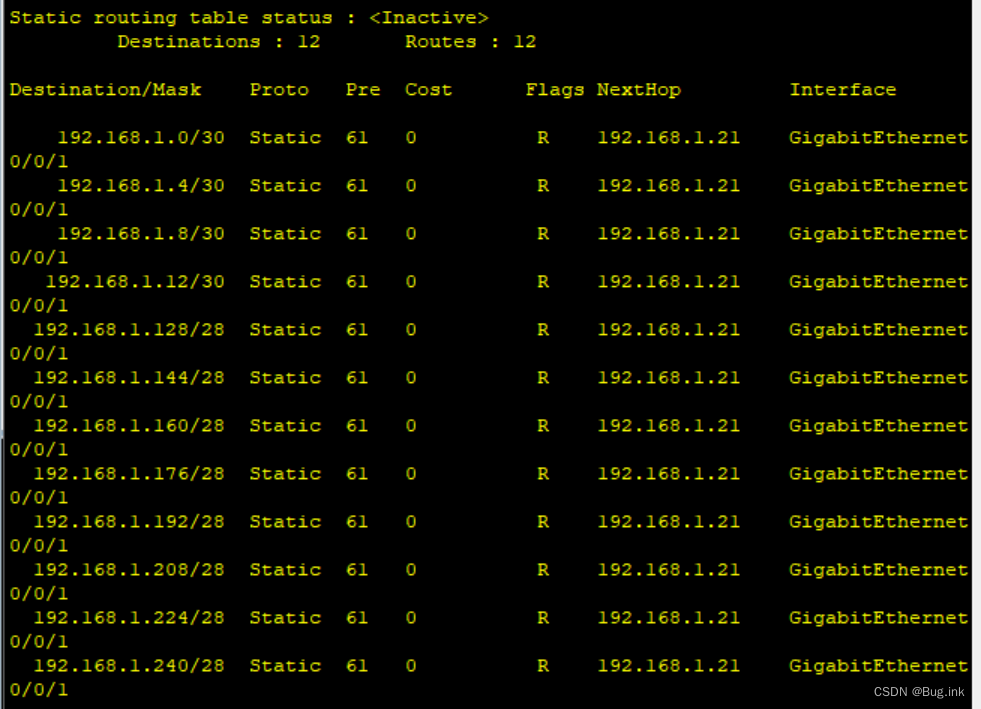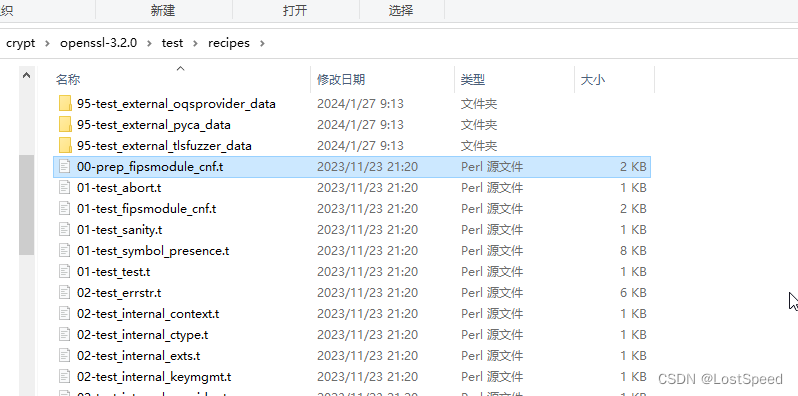位图的概念
用每一个二进制比特位来表示某种状态,适用于海量数据,通常用于判断某个数据是否存在
 以上面试题可以用位图来解决:用一个二进制比特位来表示数据是否存在--二进制比特位为1表示存在,为0表示不存在
以上面试题可以用位图来解决:用一个二进制比特位来表示数据是否存在--二进制比特位为1表示存在,为0表示不存在
位图的模拟实现
#pragma once
#include<vector>
#include<iostream>
using namespace std;
namespace djx
{
// N是需要多少比特位
template<size_t N>
class bitset
{
public:
bitset()
{
_bits.resize(N / 32 + 1, 0);
}
void set(size_t x)//将x映射到的这一个比特位--置成1
{
size_t i = x / 32;//x在数组的第几个整型
size_t j = x % 32;//x在这个整型的第几个位置
_bits[i] |= (1 << j);
}
void reset(size_t x)//将x映射到的这一个比特位--置成0
{
size_t i = x / 32;
size_t j = x % 32;
_bits[i]&= ~(1 << j);
}
bool test(size_t x)//检测x映射的这个比特位值是否为1,即x是否存在
{
size_t i = x / 32;
size_t j = x % 32;
return _bits[i] & (1 << j);
}
private:
vector<int> _bits;
};位图的应用

可以用两个位图来解决问题:

出现0次:00 出现1次: 01 出现2次及以上:10
代码实现:
template<size_t N>
class twobitset
{
public:
void set(size_t x)
{
//00->01
//01->10
//10->11
//11->不变
if (_bs1.test(x) == false && _bs2.test(x) == false)
{
_bs2.set(x);
}
else if (_bs1.test(x) == false && _bs2.test(x) == true)
{
_bs1.set(x);
_bs2.reset(x);
}
else if (_bs1.test(x) == true && _bs2.test(x) == false)
{
_bs1.set(x);
_bs2.set(x);
}
}
void Print()
{
for (size_t i = 0; i < N; i++)
{
if (_bs1.test(i) == false && _bs2.test(i) == true)
{
cout << "1->" << i << endl;
}
else if (_bs1.test(i) == true && _bs2.test(i) == false)
{
cout << "2->" << i << endl;
}
}
cout << endl;
}
private:
bitset<N> _bs1;
bitset<N> _bs2;
};布隆过滤器
将哈希与位图结合,即布隆过滤器,适用于判断非整型数据的在与不在
判断在不在:
在:是不准确的,可能存在误判
不在:是准确的

字符串的组合有无穷多种
布隆过滤器是
由布隆(
Burton Howard Bloom
)在
1970
年提出的 一种紧凑型的、比较巧妙的
概
率型数据结构
,特点是
高效地插入和查询,可以用来告诉你
“
某样东西
一定不存在
或者
可能存
在
”
,它是用多个哈希函数,将一个数据映射到位图结构中。此种方式
不仅可以提升查询效率,也
可以节省大量的内存空间
。

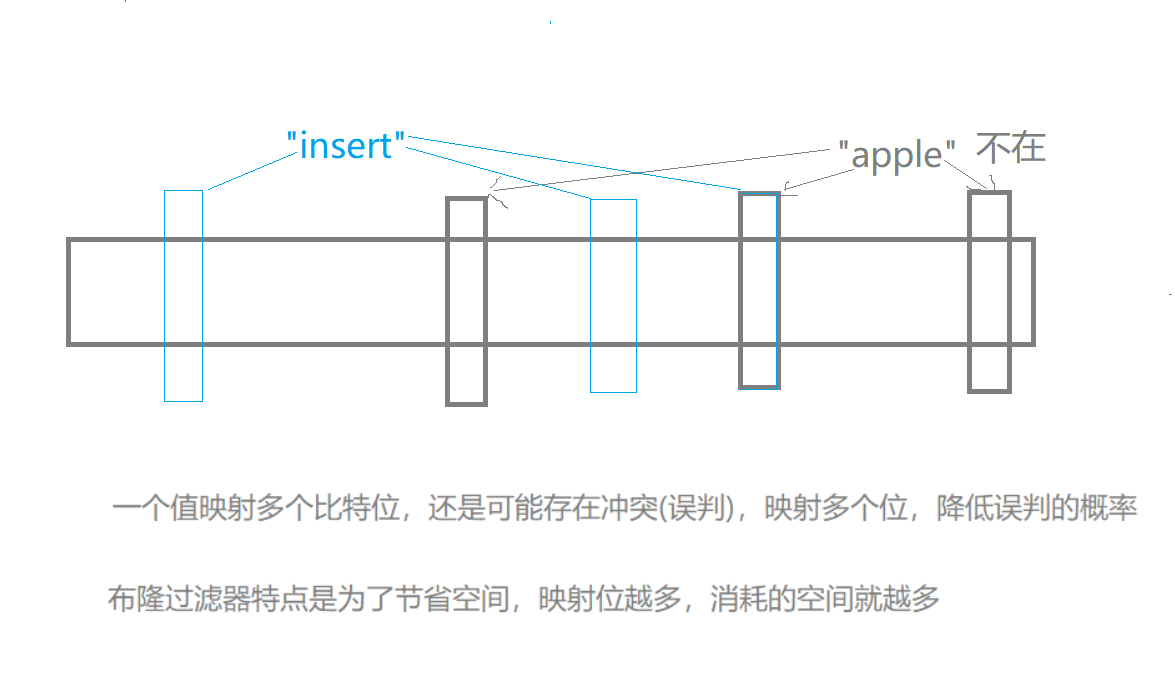
布隆过滤器的插入

向布隆过滤器中插入:"baidu"

布隆过滤器的查找
布隆过滤器的思想是将一个元素用多个哈希函数映射到一个位图中,因此被映射到的位置的比特
位一定为
1。
分别计算每个哈希值对应的比特位置存储的是否为
零,只要有一个为零,代表该元素一定不在哈希表中
注意:布隆过滤器如果判定某个元素不存在时,该元素一定不存在,即
判断不存在是准确的
如果判断该元素存在时,该元素可
能存在,也或许不存在,即
判断存在是有误判情况的
因为有些哈希函数存在一定的误判
比如:在布隆过滤器中查找"apple"时,假设
3
个哈希函数计算的哈希值为:4,6,9
刚好和其他元素所映射的三个比特位完美重叠,此时布隆过滤器判定该元素存在,但实际上该元素是不存在的
布隆过滤器删除
布隆过滤器不能直接支持删除工作,因为在删除一个元素时,可能会影响其他元素
布隆过滤器的模拟实现
bitset.h 文件在上方已经介绍过
BloomFilter.h
#pragma once
#include"bitset.h"
struct BKDRHash
{
size_t operator()(const string& key)
{
// BKDR
size_t hash = 0;
for (auto e : key)
{
hash *= 31;
hash += e;
}
return hash;
}
};
struct APHash
{
size_t operator()(const string& key)
{
size_t hash = 0;
for (size_t i = 0; i < key.size(); i++)
{
char ch = key[i];
if ((i & 1) == 0)
{
hash ^= ((hash << 7) ^ ch ^ (hash >> 3));
}
else
{
hash ^= (~((hash << 11) ^ ch ^ (hash >> 5)));
}
}
return hash;
}
};
struct DJBHash
{
size_t operator()(const string& key)
{
size_t hash = 5381;
for (auto ch : key)
{
hash += (hash << 5) + ch;
}
return hash;
}
};
template<size_t N,
class K = string,
class HashFunc1 = BKDRHash,
class HashFunc2 = APHash,
class HashFunc3 = DJBHash>
class BloomFilter
{
public:
void Set(const K& key)
{
size_t hash1 = HashFunc1()(key) % N;
size_t hash2 = HashFunc2()(key) % N;
size_t hash3 = HashFunc3()(key) % N;
_bs.set(hash1);
_bs.set(hash2);
_bs.set(hash3);
}
bool Test(const K& key)
{
// 判断不存在是准确的
size_t hash1 = HashFunc1()(key) % N;
if (_bs.test(hash1) == false)
return false;
size_t hash2 = HashFunc2()(key) % N;
if (_bs.test(hash2) == false)
return false;
size_t hash3 = HashFunc3()(key) % N;
if (_bs.test(hash3) == false)
return false;
// 存在误判
return true;
}
private:
djx::bitset<N> _bs;
};
小总结:
对于数据量很大的数据:
1 整型的在与不在及其扩展问题 -- 位图及其变形来解决(可以节省空间)
2 其他类型的在与不在 -- 布隆过滤器

